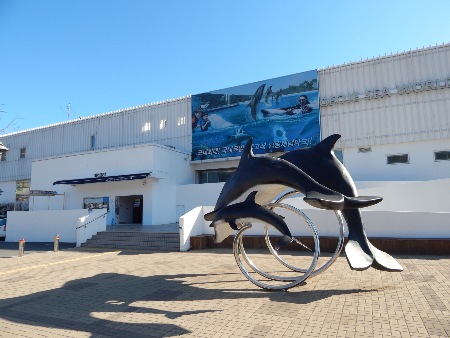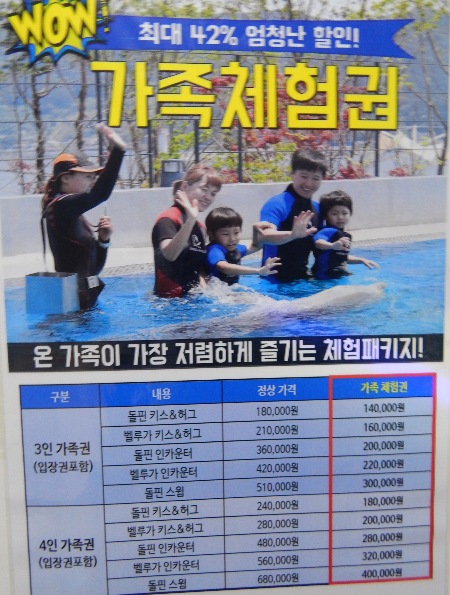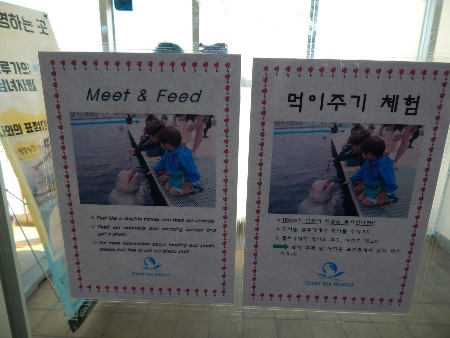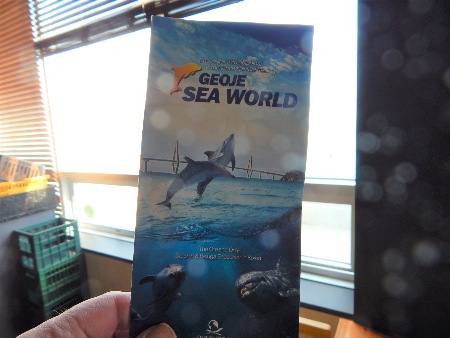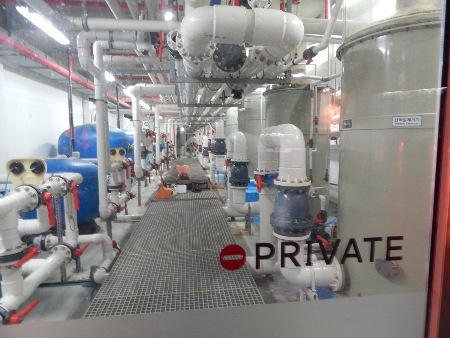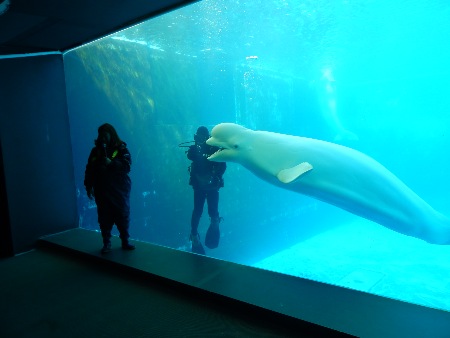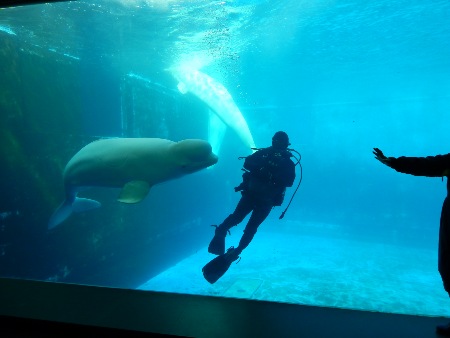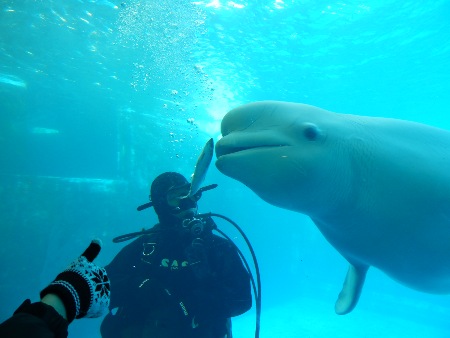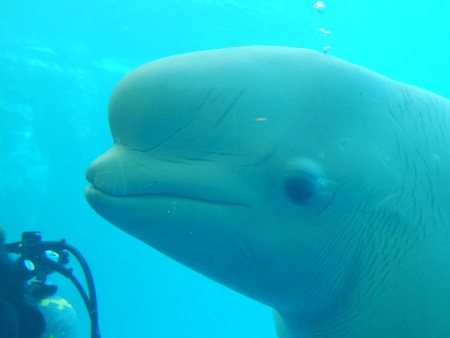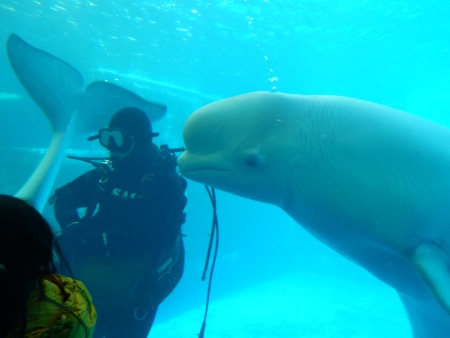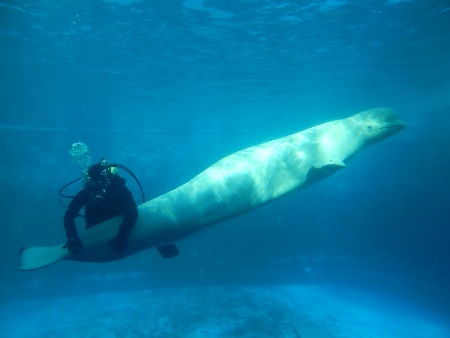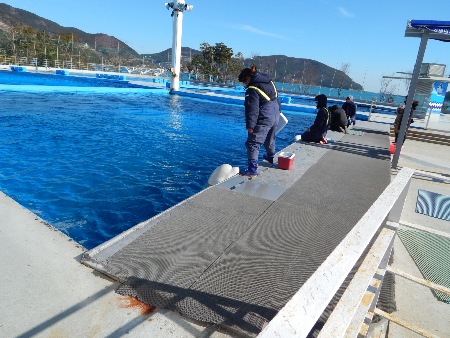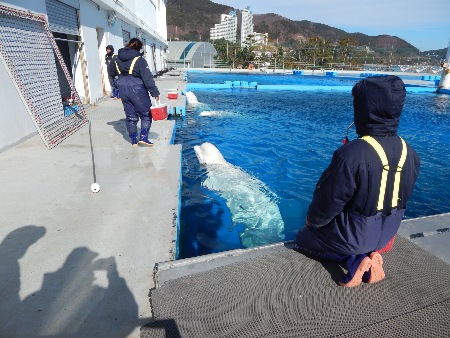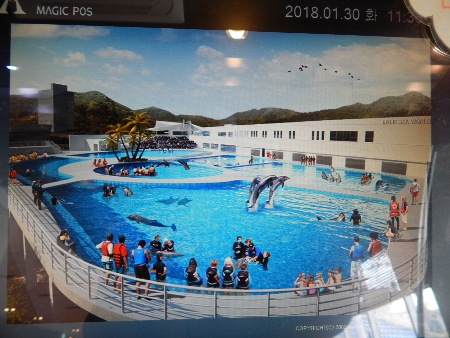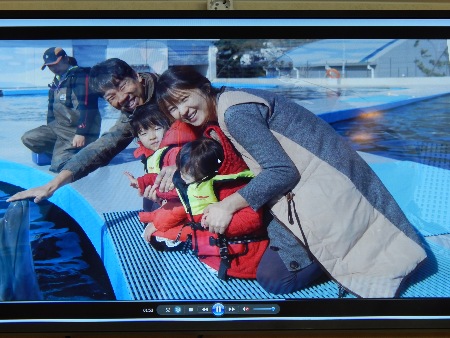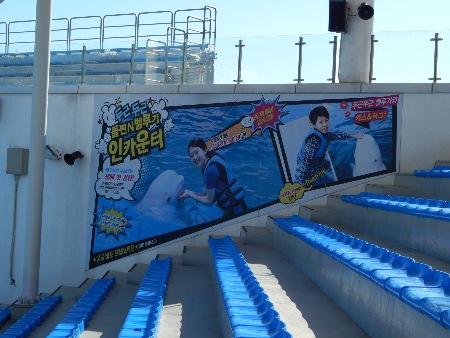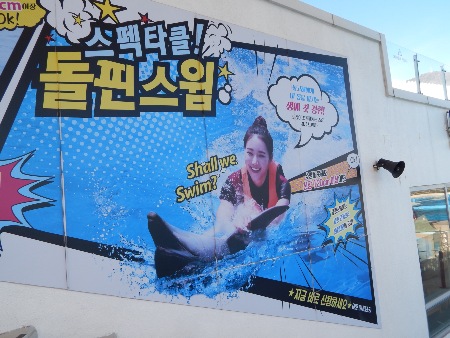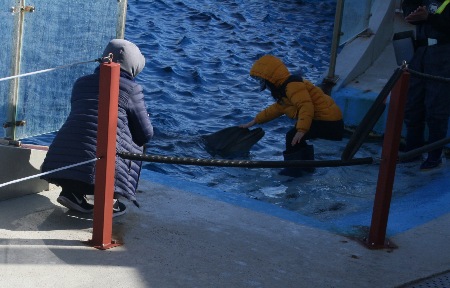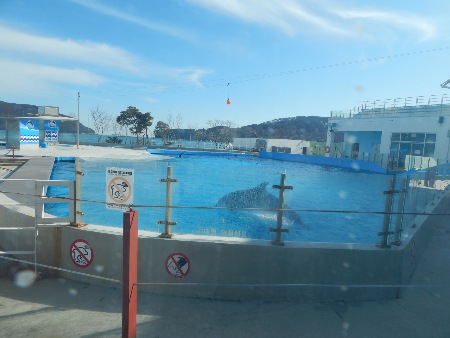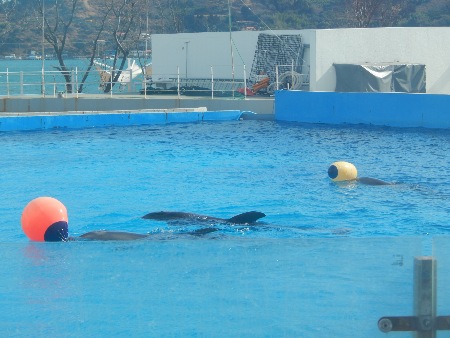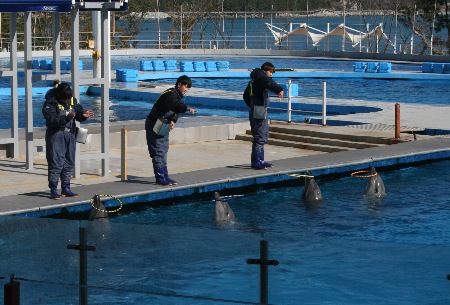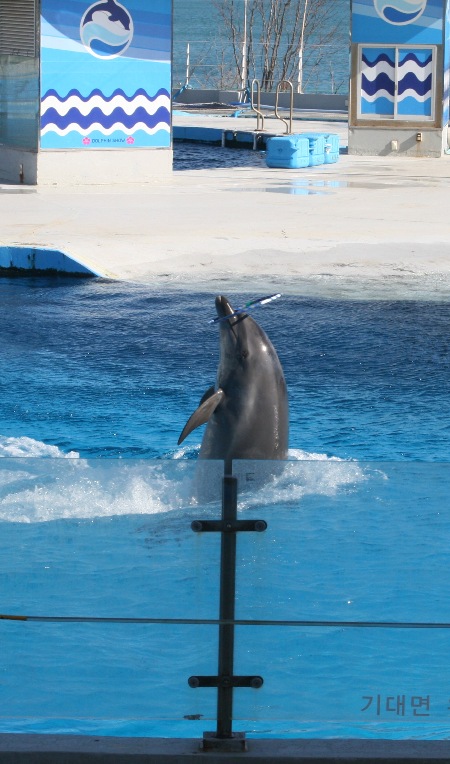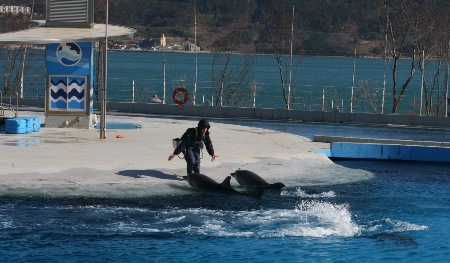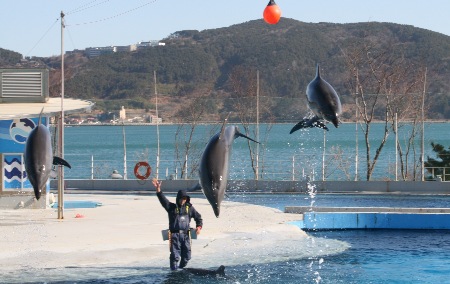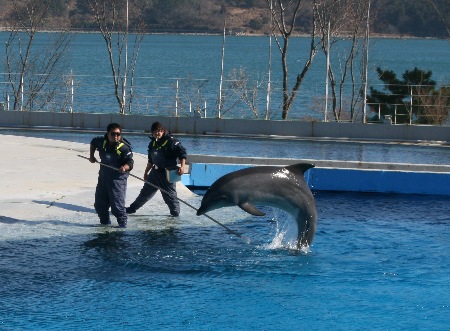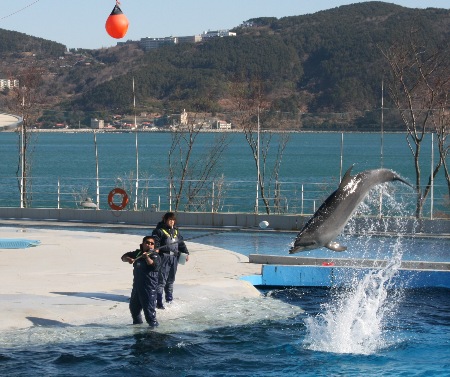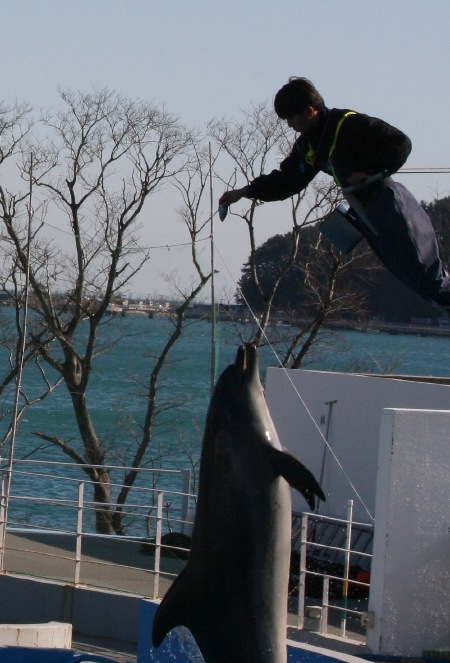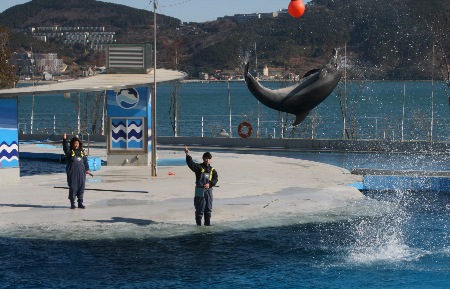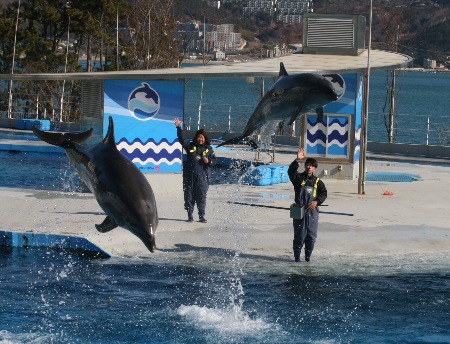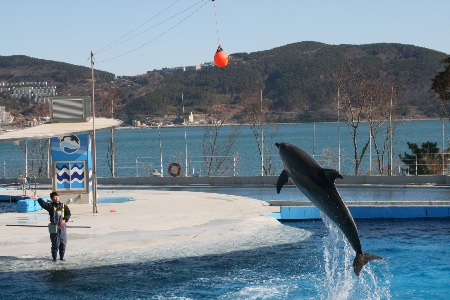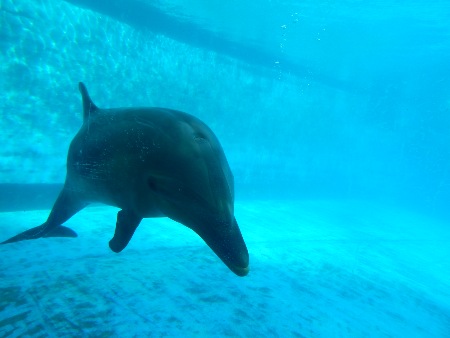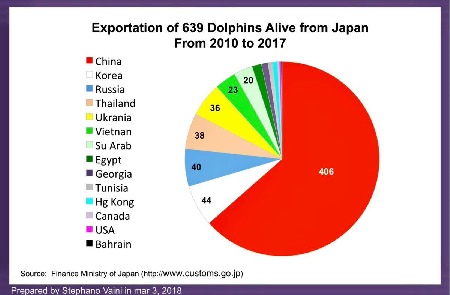

|




Dienen der Bau oder der Betrieb von Delfinarien der Geldwäsche?
Auf unserer zweiwöchigen Recherche in Asien gingen wir auch den Gerüchten nach, ob es Delfinarien gibt, die nur dazu dienen, um Gelder aus dubiosen Geschäften zu waschen.
Wir stießen auf ein Delfinarium, welches vier Belugas aus Russland und zehn wildgefangene Delfine ausTaiji/Japan in Gefangenschaft hält. Dieses Delfinarium ist die einzige Anlage in Süd-Korea, welche Weißwale in Gefangenschaft hält.
Die dortigen Delfine führten genau solche Show-Elemente auf, welche ihnen mit brutalen Abrichtungs-Methoden im Wal-Museum in Taiji beigebracht werden.
Es gibt nur zwei Shows täglich. Bei der ersten Show bezahlten nur etwa zehn Besucher einen Eintritt.
Das Delfinarium betreibt keine eigene Zucht und hat eigentlich viel zu viele Tiere, die für die Shows gar nicht alle eingesetzt werden.
Das Delfinarium bietet zusätzlich kostenpflichtige Schwimmprogramme, Fütterungen, Foto-Shootings, Streicheln mit den Tieren, etc. an, welche kein Besucher nutzte.
Etwa ein Dutzend sichtbare Mitarbeiter waren in der gesamten Anlage anzutreffen. Zwei an der Kasse, zwei im Restaurant, in dem sonst keiner war, eine Moderatorin, ein Taucher und etwa sechs Personen, welche die Show und die Fütterung durchführten.
Aufgehängte Fotos im Delfinarium zeigten an anderen Tagen auch nicht viel mehr Besucher!
Obwohl im Prospekt des Delfinariums stand, dass sich in der Anlage 16 Delfine befinden, zählten wir nur zehn Tiere und ließen uns diese Anzahl auch bestätigen. Auch unsere Recherchen ergab eine Gesamtanzahl von 16 Delfinen, welche sich noch in 2014 dort befanden. Zuletzt wurden im Mai 2013 fünf weitere Delfine aus Taiji gekauft. Wo sind die sechs Delfine verblieben? Sie sind vermutlich gestorben - wohl auch daran, dass die Tiere nicht gut ernährt werden, wie uns der Blick in die Futtereimer verriet! Es gab nur eine Sorte Fisch zum Fressen! Auf Nachfrage, ob es auch Tintenfische als Futter gibt, welche Delfine ja gerne fressen, hieß es nur: "Nein, zu teuer"!
Uns fiel auch ein dehydrierter Delfin auf, dem über einen Schlauch Wasser in seinem Rachen eingeflößt wurde.
Die vier Belugas und die zehn Delfine fressen täglich an die 200 Kilogramm Fisch. Wie kann sich solch eine Anlage finanziell lohnen? Die Ausgaben kann der Betreiber belegen, aber ob die Einnahmen stimmen, daran haben wir Zweifel und das muss auch überprüft werden!
Nicht einmal die Kosten für die Futterfische sind mit dem wenigen Eintrittsgeld zu decken! Wir vermuten, dass in diesem Delfinarium Geldwäsche betrieben wird. An der Kasse könnten mehr Besucher angegeben werden, als es tatsächlich sind und auch an den angebotenen Programmen könnten viel mehr Besucher teilgenommen haben, als tatsächlich welche dafür bezahlt haben.
Es wäre unfassbar, wenn dies so wäre!
Wildgefangene Delfine und Belugas wären hier nur in Gefangenschaft, um Gelder aus dubiosen Geschäften in solchen Anlagen zu waschen! Solche Gerüchte gibt es schon lange. Zum ersten Mal stießen wir auf eine solch mutmaßliche Anlage!
Was nützen Informations- und Aufklärungskampagnen oder "DON´T BUY A TICKET"-Aufrufe, wenn es Delfinarien-Betreiber gibt, denen es ohnehin egal ist, ob Besucher kommen oder nicht? Rein gar nichts!
Wir werden die zuständigen Behörden auffordern, dass diese mal ein Auge auf diese Anlage und in ihre Bücher werfen sollen und werden auch die Installation von Kameras und weiteren Kontrollmöglichkeiten vorschlagen!

Dolphinarium in Geoje
January 2018
Are dolphinariums
purposely built and operated to launder money?
During
our two weeks of research in Asia, we began following up on rumours
suggesting that there are dolphinariums that only exist for the sole
purpose of laundering money from dubious enterprises.
We
came across a dolphinarium that captured four belugas from Russia and
ten wild-caught dolphins from Taiji/Japan. This dolphinarium is the
only facility in South Korea that captures belugas.
The
dolphins there performed the exact show elements that are taught
using brutal training techniques at the Taiji Whale Museum.
There
are only two shows daily. The first show only had about ten visitors
who paid an entrance fee.
The
dolphinarium does not have its own breeding program and actually has
far too many animals, as only a small number are used for shows.
The
dolphinarium also offers swimming programs, feeding sessions, photo
shoots, interaction with the animals etc., which no visitor used
during our research.
About
a dozen employees were seen to be present throughout the facility.
Two at the cash register; two in the restaurant, where no visitors
were seen; a presenter, a diver and about six people who were part of
the show and feeding.
Photos
presented in the dolphinarium showed that there were also not many
more visitors on
any other days!
Although
the brochure of the dolphinarium stated that there are 16 dolphins in
the facility, we counted only ten animals and this number was
confirmed to us by staff. Our research also showed a total of 16
dolphins, which were still there in 2014. Five more dolphins were
purchased from Taiji in May 2013. Where are the six missing dolphins?
They most likely died - probably because the animals are not well
fed, as evident in what we saw in their food buckets! There was only
one type of fish for the dolphins to eat! On questioning staff as to
whether there is also squid supplied for food, which dolphins like to
eat, we only received the answer: "No, too expensive"!
We
also noticed a dehydrated dolphin which was having water poured down
its throat.
The
four belugas and the ten dolphins eat around 200 kilograms of fish
per day. How can such a facility be financially viable? The operator
can prove
the expenses, but whether the revenue is correct, we have our
doubts and that must also be checked!
Just
the cost of the fish used for food would not be covered by such a
small entrance fee! We suspect that money laundering is practiced in
this dolphinarium. At the box office, more visitors could be claimed
to have actually visited. Similarly with the programs on offer, these
too could be manipulated to show many more visitors participating
than were actually paid for.
It
would be unbelievable if that were the case!
If
so, dolphins and belugas caught in the wild would be in captivity in
such facilities for the sole purpose to launder money from dubious
enterprises! Such rumors have been around for a long time. For the
first time we have come across such a suspected facility!
What
good are information and education campaigns or calls not to buy any
tickets, if there are dolphinarium operators who do not need nor care
if visitors attend or not? Pointless!
We
will ask the authorities to keep an eye on this facility and their
books. We will also suggest the installation of cameras and other
methods of control!

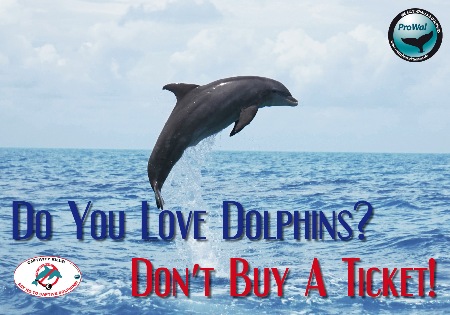
Aus
Tierschutzgründen - Wenn keine Recherche-Arbeit betrieben wird, um
mit der Zielsetzung ein Delfinarium zu schließen, dann machen Sie
bitte einen großen Bogen um solche Tiergefängnisse!
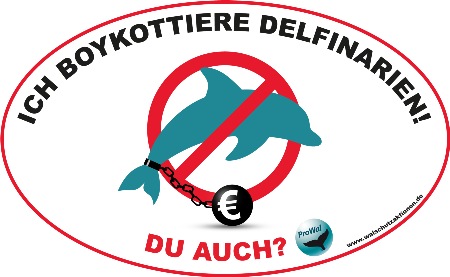
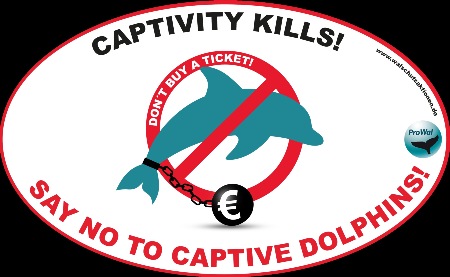
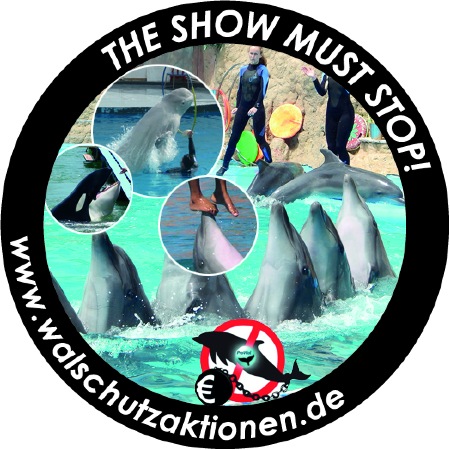
Süd
Korea ist durch seine Delfinkäufe in der Vergangenheit für die
grausamen Delfin-Treibjagden in Taiji/Japan mitverantwortlich!
Due
to South Korea purchasing dolphins in the past, they share responsibility
for the cruel dolphin hunts in Taiji/Japan!

































































